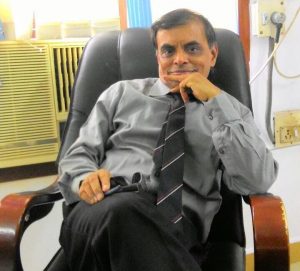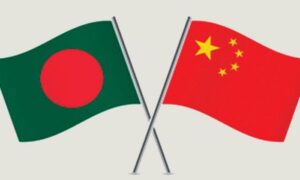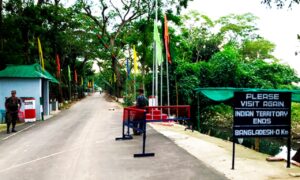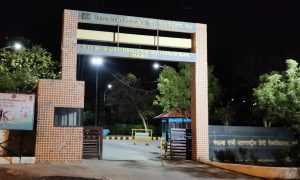India and the World chapter 7 : India challenges Pakistan for independent Bangladesh!

Baskaran Krishnamurthy
Read Chapter 1 , Chapter 2 , Chapter 3 , Chapter 4, Chapter5, Chapter 6 if you haven’t yet read them.
“What kind of a future and a people we are aiming at? We want a people whose hopes will never be shattered. We want a people whose voice, the voice of peace and friendship, is echoed in all corners of the world. Our great leaders held up to us the ideals – of a new world, of a new vision – and we have to fulfil their promises.”
(Indira Gandhi form the Red Fort on 15 August 1973)
Wisdom is all about reading the future prospects with the present strength and past experience.
The past of Pakistan was clearly against any misadventure. It was already well established that the neighbour was much stronger; international community was not ready to support and that ‘religion’ did not cut much ice even among the Muslim countries with the Arab block either remaining neutral or supporting India. This isolation staring on its face must have driven Pakistan to consolidating its position by means of a conciliatory approach and a substantial ‘no-war’ period.
Wise decisions kept evading the rulers of Pakistan as they continued to live in a world of fantasy. World history has so many number of such instances where an imaginary, egoistic pursuit, failing to gauge the reality, led to massive downfalls and marauding ill effects.
This is NOT to undermine the sovereignty or the steadfastness of Pakistan. It does have so many qualities and advantages that its citizens can be proud of. Since we are now discussing about the political relations and the Wars between India and Pakistan, we point to the utter folly behind the tutored enmity that the people of Pakistan are subjected to. Once this folly is realized in its entirety, rivalry would vanish; sanity would surface; civility would take over.
We are NOT for resorting to empty, rhetoric National pride and let us all shed our presumptions and prejudices. Let there be no premonitions any more. A positive, confident, trusting relationship is very much possible; and, let us not forget, any day it is possible.
Both India and Pakistan would be equally and immensely benefited if they forget the quarrels, bury the hatchet and join together to working for the overall good of their peoples. Two brotherly Nations, two friendly communities, two cordial armies and two loving populations of India and Pakistan would be the most beneficial thing that can happen to the entire Mankind. It is all in the hands of a handful of leaders of both sides to pave way for a beautiful, bountiful dawn; for a peaceful living together.
‘For a change’, the 1971 Indo Pakistani war did not have ‘Kashmir’ as its triggering point. This time, the debacle came from within. The eastern part of Pakistan caused it.
There was a very clear division between the West and East Pakistan. They were geographically, culturally, linguistically and emotionally two different blocks and could never go together. There was never a blend or mix-up of the two in its real sense. They had nothing in common except the religious identity – that just would not suffice to keep them united.
It offers to Indians a point to contemplate. If the same religion cannot keep a nation together, existence of different religions cannot break a Nation too. Noted my friends?
If religion was to be the only point to bring two different lands under one nation, then, Pakistan could have been accessed to Afghanistan or to any Arabian Kingdom and even to some of the African countries. ‘One religion – one Nation’ theory can never be the criterion.
America, Australia and European countries have Christianity in common; as said earlier, the Arabs have Islam. The oriental countries like China, Japan and Korea follow Buddhism. (not the China of today – obviously) Hence, the very partitioning of India on the basis of religion was ‘ab-initio’ an ill conceived notion. Yet, it was done.
The eastern part of Pakistan had Bengalis who had literally nothing to do with the other part. How could the ‘other’ control them? How could they be allowed to rule them? How could a far off ‘outsider’ govern them? The Bengalis argued that they had never been a part of ‘Pakistan’ and that it had no ‘locus standi’ to take any binding decision on them. And, the Bengalis were just right.
The trouble started as early as 1950 itself. In the year 1948, Pakistan Government designated Urdu as its only national language. The Bengalis of East Pakistan protested very strongly. The Government, instead of trying to find a way out, ordered banning of meetings, processions and every other form of legitimate protest by the people of East Pakistan.
On 21st February 1952, students of University of Dhaka staged a mass protest defying the orders of the Government. A number of students were brutally killed by the Pakistani police. This created a civil unrest all over the East Pakistan. Though the government finally gave in and Bengali was granted the official language status in 1956, it was just too late to pacify the people of East Pakistan to accept the control of the Western part over them. The Liberation movement had already set in.
The growing unrest in East Pakistan forced the President Ayub Khan to step down; Gen Yahya Khan took over from him. But the ground situation did not change a bit. In fact it turned more intense.
General elections were ordered by Yahya Khan in 1970. The Awami League of Sheikh Mujibur Rahman captured the East Pakistan Legislative assembly with a near total sweep of 167 / 169 seats. By virtue of this landslide victory, Mujibur Rahman gained a majority in the ‘combined’ Pakistan assembly too, as the parties of West Pakistan had a fractured verdict in their favour.
This development caught the Pakistanis off guard against a possible domination of the Bengalis over them with the reins of power going into the hands of Mujibur Rahman. To avoid any such eventuality, West Pakistan vetoed Mujibur out of the race for the Premier post. This hasty action of the Pakistani politicians sealed the fate of united Pakistan.
General strike in East Pakistan crippled the normal life: tension gripped all of East Pakistan with a number of Pakistan supporting Biharis being killed. Yahya Khan deployed army to quell any act of violence. It was done rather to inflict a sense of fear among the Bengalis who were coming out in more and more numbers against the rule of West Pakistan over them.
Awami League was outlawed; Mass arrests followed; Mujibur Rahman was arrested too. The Awami League leaders declared a government in exile with Mujibur Rahman as their leader. The unrest drove millions of Bengalis to India as refugees. India made fervent appeals to the international community to address the grievous problem. None heeded.
The in-fight drove thousands of Bengalis out every day and they entered in large numbers into India as forced out refugees. The influx kept mounting and so it turned out to be a serious problem of India too.
Initially India was too reluctant to get engaged in an internal affair of another country, as it has been the core principle in its foreign affairs. But the situation was getting out of control taking unmanageable proportions. The time had come to decide.
On March 27, 1971, the Prime Minister of India offered full support to the people of East Pakistan in their legitimate fight for independence and was ready to be a part of the movement in whatever manner possible.
In a month from then on, the Indian Cabinet met and ordered the Chief of the Army to go to East Pakistan. He was none other than Gen Sam Manekshaw – one of the greatest warriors India ever produced.
And the Prime Minister ordering him to proceed to the ‘field’ was…., to be known later as the ‘Durga of Indian polity’ – Mrs. Indira Gandhi!
Author – Baskaran Krishnamurthy, Writer, Columnist & Income Tax officer



























 WhatsApp us
WhatsApp us
Pingback: 7lab pharma europe
Pingback: 카지노사이트
Pingback: English To Russian Translation
Pingback: Bitcoin Loophole Review
Pingback: 65cm love dolls
Pingback: is bitcoin loophole a fake?
Pingback: Social Media Marketing
Pingback: Harold Jahn
Pingback: Robotic Automation testing
Pingback: PG SLOT/PGSLOT
Pingback: buy ruger firearms online
Pingback: Hire Online web Designer in Canada
Pingback: 토렌트사이트 추천
Pingback: cbd for anxiety
Pingback: more tips here
Pingback: Research
Pingback: 프로툰
Pingback: ถาดกระดาษ
Pingback: diyalaUniv
Pingback: Market
Pingback: cheap fake id
Pingback: 늑대닷컴
Pingback: Ksycutie Chaturbate
Pingback: nova88
Pingback: Devops Advice
Pingback: second brain template
Pingback: dumps pin 101 atm
Pingback: sbo
Pingback: best weed websites
Pingback: แทงบอลออนไลน์
Pingback: where to buy shrooms Australia.
Pingback: Thai Magic Mushrooms
Pingback: you can look here
Pingback: Devops Services